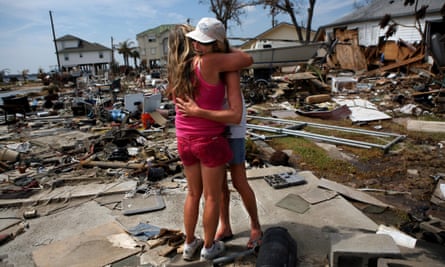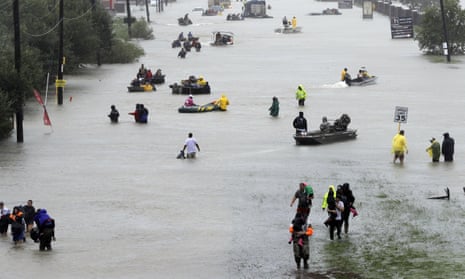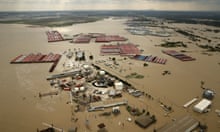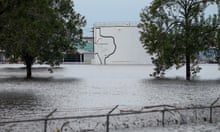As rain continued to fall on Houston and rescue personnel scrambled to answer remaining emergency calls from trapped residents, the city and region faced what will likely be a years-long road to recovery from Hurricane Harvey and its aftermath, city planning and disaster response experts said.
While it was too early to compare Houston’s recovery challenges to the ominous examples of New Orleans after Hurricane Katrina and New York City after Hurricane Sandy, officials said, images of a drowned city made the scope of those challenges plain.
High on the list of lessons from the Katrina recovery effort is the need to pay attention to vulnerable communities in the Houston area, said Gavin Smith, director of the Department of Homeland Security’s Coastal Resilience Center of Excellence at the University of North Carolina.
“If you think of a storm striking an area of modest means, low- and moderate-income individuals, their capacity to recover is very different from those that have flood insurance, that have the economic means to recover on their own,” Smith said. “So that’s going to be something to watch over time, to see the impacts of the flooding in these different areas, low-wealth communities versus middle- and upper-income communities.”
There was no suggestion that Houston faces a human catastrophe on the scale of Katrina, which was responsible for at least 971 deaths in Louisiana and 2,000 regionally in 2005, and attracted at least $71bn in federal relief funds. Sandy, in 2012, which brought a storm surge higher than 9ft to lower Manhattan and was responsible for the deaths of 43 people, likewise posed unique challenges, given the city’s submerged transportation infrastructure and population density.
A potential point of comparison could be drawn between Houston and New Orleans, however, said Smith, who was dispatched to the Gulf Coast after Katrina as a Fema adviser and became director of the Mississippi governor’s office of recovery and renewal.
“Houston, in some ways, is somewhat similar to New Orleans, in that it’s a major metropolitan area that was inundated by a major flood,” Smith said. “It just so happens that in New Orleans the levees broke. They thought after the storm passed, they thought everything was OK. And then the levees broke.
“The idea of massive urban flooding is different than a storm surge-induced event.”
While recovery is different for every city after every storm, a combination of official experience and analytical research has identified typical post-disaster stages: emergency, restoration, reconstruction and mitigation of future disasters. (“Restoration” refers to repairing salvageable infrastructure, while “reconstruction” means building anew.)
The phase of immediate recovery, still unfolding in Houston, includes search-and-rescue and providing temporary shelters. Texas’s governor, Greg Abbott, activated all 12,000 of the state’s national guard members on Monday to assist in the rescue effort, with dozens of requests pending. As of Monday evening, the number of completes rescues was more than 2,000 and it was expected that 30,000 would need shelter.
Immediately after a large-scale disaster, infrastructure known to engineers as “lifeline systems” – power, transit and communications – must be restored, the sociologist Eric Klinenberg wrote in a report on the aftermath of Sandy.
In Houston, as many as 100,000 were without power late on Monday, and all service was suspended on the local public transit system, Metro Houston. Major roadways, including those running through two reservoirs, were “underwater and will remain impassable for several weeks to several months”, the Harris County flood control district said.
Also among the near-term challenges are securing critical facilities and bringing them back online, including fire and police stations, hospitals, nursing homes and schools. Water and sewer systems and debris clearance are next on the list, Smith said, followed by “issues of physical reconstruction, and reconstituting local and regional economies”.
One insurance analyst suggests the financial damage has inflicted could eventually be as high as $100bn (£77bn).
“An event of this scale can very well take years, and in some cases it may take more than 10 years to actually fully recover from this event,” he said.

Not the first time
Houston faced a big recovery challenge less than a decade ago in the aftermath of Hurricane Ike, which hit the city on 13 September 2008, killing dozens in Texas, knocking out power to 2.6m homes and causing an estimated $29.5bn in damage. After that storm, it took the city 10 days to restore power to 75% of its customers and another week to restore full service.
Since Ike, Houston has invested hundreds of millions of dollars in a so-called smart grid, which self-signals when it goes down (instead of someone without power having to call). The city has cut down tens of thousands of trees to decrease risks to power lines. It has also upgraded its drainage infrastructure in the form of ditches and improvements to the reservoir system.
The city faces unique vulnerabilities, however: its port, one of the world’s busiest, is ringed by oil and gas facilities, which would represent a contamination threat if breached. Unchecked urban sprawl, with pavement spreading for miles over a former wetlands coastal plain, has further increased the risk of flooding.
As for Houston’s likely recover timeline, a National Academy of Sciences study of disaster recovery going back to the San Francisco earthquake and fire of 1906 found that reconstruction typically takes 10 times as long as the initial emergency period. A four-week emergency would mean a 40-week reconstruction, not counting mitigation efforts.
The exception, according to the authors of the study, was Katrina. The emergency period of more than six weeks in New Orleans after the storm “appears to be longer in duration than any other of the studied disasters and can be readily explained by the evident failures in the initial evacuation and response,” the study said. The last emergency shelter used in the storm did not close until 14 weeks after the event.
Another challenge is “human recovery”, defined by a 2009 Rand Corporation paper as the “long process of restoring individual and community functioning”.
“Human recovery goes beyond infrastructure recovery to include restoring the social and daily routines and support networks that foster physical and mental health and promote well-being,” the Rand study said. “The hurricanes of 2005 [Katrina and Rita], along with Hurricane Ike, showed that nongovernmental organizations (NGOs, including community- and faith-based organizations) are instrumental contributors to human recovery.”
“One thing that does cut across all these elements, whether it’s response or long-term recovery, is the critical importance of governance,” said Smith.
“People may or may not use that term, but in essence – how do you get the public actors, federal, state and local, working in coordination? How do you get the nonprofit community working in coordination with those players? How do you get the private sector working together with all of those players?
“Managing resources – money, policy, and technical assistance – in a thoughtful way is extremely complicated. And yet if you haven’t pre-developed a good disaster recovery plan, trying to do that in the aftermath of a disaster – which is actually very common but unfortunate – is very, very difficult.”









